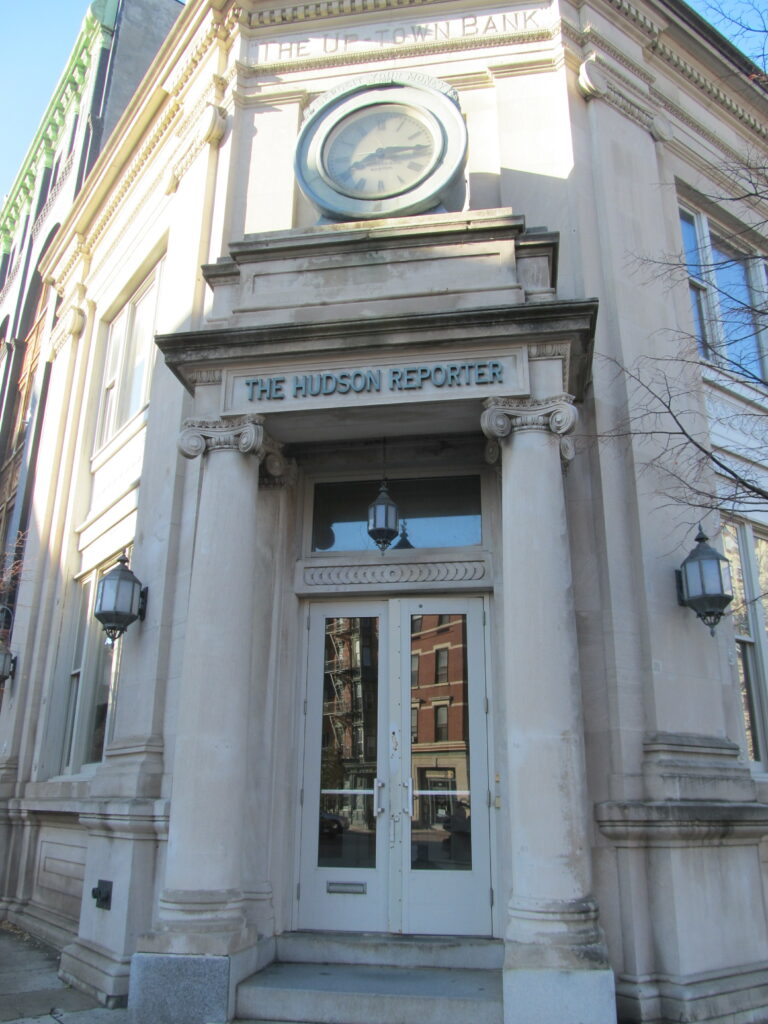The Death of a Newspaper Icon

The loss of the Hudson Reporter this week was more symbolic than a reality.
The newspaper chain in Hudson County had been in decline for more than a decade before being sold off to a Philadelphia circular concern.
Founded by a developer, the newspaper chain relied heavily on the real estate market, and its financial success often rose and fell with real estate sales, the final, most serious blow coming with the 2008 market collapse from which the paper never recovered.
This said, however, the Hudson Reporter far exceeded its expectations when it came to its powerful influence in the community.
Founded in 1983, the Hoboken Reporter as well as its various sister papers, was in a unique position to witness one of the most significant social phenomena in a half century, as people began to return to urban centers. Its pages reported on the significant turmoil between traditional ethic residents of places like Hoboken and the “newcomers” that were flocking back to take advantage of Hudson County’s closeness to Manhattan.
Hoboken, and later Jersey City, saw massive shifts of population, that eventually manifest itself in political conflict. And the Hudson Reporter was on the ground reporting it all, documenting this rare occurrence that gave this weekly chain clout even the local daily newspaper lacked.
Many residents, old and new, turned to its pages to become enlightened as to what these changes meant and often used the paper to vent their outrage.
It became the document of record, often authored by some great writers who later went on to report for “The New York Times,” “Daily News,” “The Washington Post,” or “The Wall Street Journal.”
In the 1990s – before the advent of bloggers, the Hudson Reporter was the place where people aired their differences, and the publication reported on and influenced key elections that saw the last best effort by the old guard under the banner of Mayor Anthony Russo in a disparate attempt to halt the inevitable. It was the Hudson Reporter that reported on the plight of artists in Jersey City as they found themselves under siege by waterfront development.
The paper chain saw and reported on the rise and fall of political giants, such as the aforementioned Mayor Russo in Hoboken, and Jersey City’s first African-American Mayor, Glenn Cunningham. The Hudson Reporter was on the ground floor when a young councilman, Steven Fulop, took on and eventually defeated the long-established Mayor Jeremiah Healy in Jersey City.
The Hudson Reporter documented the Democratic political disaster in the 1990s that led to Bret Schundler becoming the first mayor in Jersey City – the first Republican in almost a century. And as a consequence saw the rise to power of Hudson County Executive Robert Janiszewski. It was reporting in the Hudson Reporter that ultimately put Janiszewski behind bars a decade later.
During its 40-year span, the Hudson Reporter gobbled up other local newspapers in North Bergen, Secaucus, West New York and elsewhere in a desperate attempt to serve the community newspapers throughout Hudson County with the acquisition of the Bayonne Community News in 2004 perhaps the pinnacle of this success.
But as said, the Hudson Reporter’s fate was linked to real estate, and when the market tanked in 2008, the owners scrambled to save the paper through a series of measures, none of which ultimately succeeded, selling off the property in Bayonne and Hoboken as stop gaps against the inevitable tide of change, eventually forced to see the franchise in 2018.
But there was another massive cultural change that occurred with the property crash of 2008 that was almost invisible to the owners – or for that matter – most people in traditional print media. The smart phone came out that same year, and revolutionized the way people collected news. Bloggers – especially in Hoboken – began to compete with the Hudson Reporter for political gossip. While the Hudson Reporter – like other media – created a website in order to capture some of this losing readership, in truth, it was never tech savvy enough, and soon fell back into the dust. Old timers in these towns remained loyal, picking up their copies of the Hoboken Reporter of the Bayonne Community News each week, but as that generation faded, so did the hopes of the paper chain.
In many ways, the death of the Hudson Reporter mirrored the massive social changes it had been witness to over the previous decades, and like many of the traditional residents in these towns, the Hudson Reporter could not change enough with the times to complete.
While many believe the paper chain could have held on a few more years, its demise was inevitable, as times changed, and the paper could not change with them.
For those of us who worked in its newsroom, it was a noble fight, an effort to preserve the essence of a community newspaper, one that started out as an advertising rag for real estate and had grown into a powerful – if brief- force to be reckoned with.
We will not see such a tale told again.









They stopped BRINGIng the papers around
To our building.
I haven’t seen 1 in 6years.
We have no idea where to get a copy.
Thank You JEFF HENNING FOR YOUR SERVICE.
Interesting tale, well told but only one thing, I don’t think the bloggers did much damage since ultimately people remembered the difference between a publication that has to get facts right, and one that serves a political side or prints sheer rumor. Where are the bloggers now.
Interesting that you didn’ t mention the name of that “developer,” Joe Barry, who stiffed his staff by tiny amounts ($5 on articles) and went to prison in Chris Christie’s “Jersey Sting” for various forms of corruption.
Hoboken Girl is s prime example of the direction of the “news” today and it’s foreseeable future. Advertising has and is the principal generator of income for the news in any medium. Gone are the classifieds section and the one-page ads. Here are the ads disguised as “news”; the biggest discrepancy and moral dilemma that many are unaware of. That great restaurant that Hoboken Girl is posting stories about is more than likely paying to receive this treatment. When I opened a new business in Hoboken, I requested, and was given the price list. I didn’t end up paying, but I’ve been fortunate to have been covered in multiple articles regardless. News is news, except when it’s not. Maybe I just prefer my news to remain neutral and present the facts and not as opinion pieces disguised as real news.